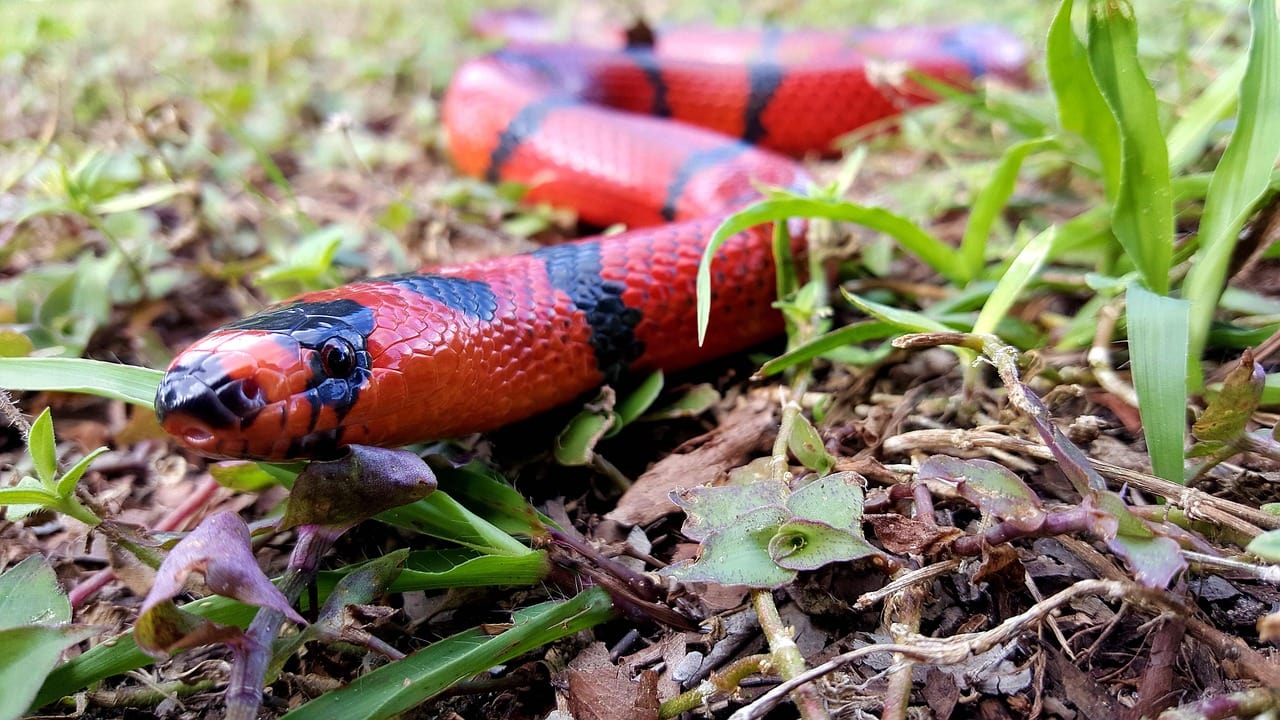
Instead, find a reptile rescue in your area or ask friends and family if they know of any one who might be interested in finding a new home for your pet. Finding a new home for an unwanted pet can be challenging, but it is important not to release them into the wild for their own safety and the health of the ecosystem. They are a long term commitment that many people do not consider when they purchase them. Start by handling it for approximately five minutes a day. Ensure that you hold it above something that offers a safe landing, just in case. Milks snakes can live for more than twenty years. When you get a new snake, give it approximately ten days to get used to its habitat before you try picking it up and handling it.

Here at Ferrets and Friends, we feed our adult snake, Natasha, one adult mouse every two weeks. A general rule of thumb is using prey that is 1.5 times the girth of the snake at its thickest point. It is important to provide appropriate sized meals for your milk snake on a regular basis. A common coloration includes apricot or orange coloring on what would normally be the white bands. In the pet trade, other color mutations have been selected through breeding. The incubation period lasts from 59 to 68 days. Eggs must be removed right away after laying and put in wet vermiculite.
#MILKSNAKE HANDLING FULL#
If the copulation is successful, then you may use an egg-laying slot that should be partially full of damp sphagnum moss or vermiculite. In the wild, most Pueblan Milk Snakes have red, white, and black bands of color. Put a male and a female snake together for a limited time until copulation occurs. Like most snakes, they are escape artists so an enclosure with a locking mechanism is recommended. Adult snakes will be about the same girth as an adult corn snake, but may be significantly shorter in length. Distribution: Throughout NH except far northern regions.ĭescription: A slender-bodied snake ranging from 24-36 inches.Pueblan Milks Snakes are a good snake for beginners as they do not have complicated humidity requirements, nor do they require much space. To give your milk snake options based on how it’s feeling, make sure that the vivarium has a warmer side and a cooler side. There are heavy red or reddish-brown blotches over a gray base along the top and a black-on-white checkerboard pattern on the belly. The warmer side should be at 90 degrees Fahrenheit, while the cooler end should be between 75 and 80 degrees Fahrenheit. Often has a Y shaped light spot on the top of the head.Ĭommonly Confused Species: Timber Rattlesnake Copperhead (not a NH species), Corn snake (not a NH species) A good way to create a warm spot in the vivarium is with a spot bulb. Habitat: Found in a variety of habitats including fields, farmland, woodlands, and rocky hillsides. The Pueblan milk snake has long been a favorite snake among hobbyists and keepers.

May also be found in barns or old basements with stone foundations. The Pueblan milk snake is a colorful and attractive specimen, and it’s easy to care for in captivity. The eating habits of milk snake species are very similar to the habits of other temperate climate colubrid snakes. A snake cage that’s too hot is just as bad as one that’s too cold. This species does well with a gradient of mid-70s (F) on one side, and mid- to upper-80s on the warmer side. Due to their modest size, they can be housed in a standard size terrarium. To keep your pet milk snake healthy, you need to make sure the habitat has proper temperatures year round. They generally have excellent appetites, as well. Uses logs, stones, boards, or trash piles for cover. While these snakes do occasionally make their way into pet.

Milk snakes average 36-48 inches in length and they can vary in coloration. They are large constrictors and will generally not bite when handled. The ideal temperature range at which to keep a Kingsnake would be 24-26C (75-78F) in the daytime, with a basking spot of 30-31C (86-88F), and temperatures. Because of the big size of the hatchlings when they come out of the egg this species is by far. The milk snake (Lampropeltis triangulum) is a non-venomous species of colubrid snake which ranges from Puebla, Morelos, and Oaxaca, Mexico. Life History: Lays 6-24 eggs during summer in soils piles or under logs, boards, or trash piles. Background: The eastern milksnake is one of the more common snakes found in Connecticut.

Diet fluctuates depending on habitat and may include small mammals, snakes, amphibians, and eggs. The Sinaloan milk snake is a colorful, solitary species rarely seen during the day. Milk snakes may shake their tails rapidly, often sounding like a rattle.Ĭonservation Threats: People killing individual snakes because of fear.


 0 kommentar(er)
0 kommentar(er)
